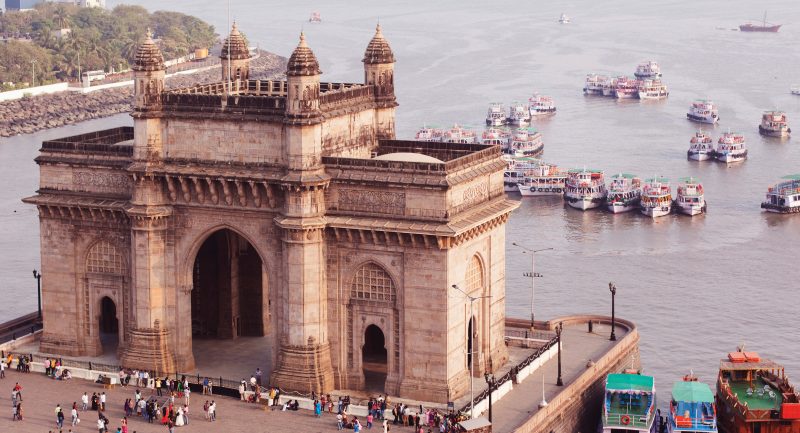
Guided by their sharp business acumen and adaptability, Sindhis have braved the Partition, fled from one nation to another and weathered ups and downs in the economy to set up some of the biggest companies in the world. In Paiso, Maya Bathija chronicles the journey of five Sindhi families and the business empires they have established.
Here’s an excerpt from the book.
Sindhis are a community originally from Sindh, which is now in Pakistan. Even in the earliest references, Sindh has been known as a beautiful land, rich in natural resources. Since thieves can only steal from lands of abundance, the inhabitants of this area had their peace and harmony disturbed from time to time by plunderers. From the Mohenjo Daro and Harappa excavations, archaeologists discovered the city structure that ran with underground drainage, and dug up bricks and jewellery, proving that 5,000 years ago a full-fledged civilization lived in Sindh, on the broad plains and valleys of the Indus River.
The Sindhis were predominantly Hindu by religion, but some later converted to Islam and Sikhism. There was a time when some Sindhi families promised their eldest sons to Sikhism, who wore turbans in the same way as Sikhs.
A lot of the Sindhi heritage and history was destroyed by invaders. Chach Namah,the oldest known historical account of Sindh, was written by an Arab historian accompanying the forces of Mohammed bin Qasim, who attacked Sindh in 711 ad. It has also been established that there existed Sindhi Hindu dynasties, such as the Samma, Samra, Khairpur, Kalhore and Talpur.
Sindhis were primarily businessmen and traders. Their skills did not naturally allow them to take part in warfare, but they were known for their perseverance and business acumen even centuries ago. The main trading castes were the Lohana, Bhatia, Khatri, Chhapru and Sahta. These castes were occasionally divided into occupational groups, such as the Sahukars (merchants) and the Hatawaras (shopkeepers).The most affluent Sindhis were the merchants who owned trading firms (kothis4) in the major towns of Sindh. Eventually, the name Amil5 was given to any Sindhi who was engaged in government service.
Post-Partition, many of them who moved to India, having left everything behind, experienced much poverty and hardship. And there has been many a proverbial rags-toriches story in the community.
The early perception of the Sindhworki who had moved to India and lived in Bombay in the post-Partition days was that a Sindhi would do almost anything to make even a small amount of money. If the shops around sold sugar for Re 1 a kg in bags of 50 kg, Sindhi businessmen would buy 50-kg bags of sugar and sell the commodity on the streets for 99 paise a kg. Their price being 1 paise cheaper per kg, they sold hundreds of bags of sugar, making a loss of 50 paise per 50-kg bag. This amazed others and made them wonder why a person would work so hard to lose money. What they failed to realize was that every time a Sindhi businessman sold an empty bag for Re 1, he made a net profit of 50 paise on every 50-kg bag of sugar.
Sindhis were known to sacrifice profit margins for a large turnover. With the exception of the Seths of Karachi, the Sindhworkis of Hyderabad and the Shroffs of Shikarpur, most Sindhis were local shopkeepers and moneylenders. They specialized in the hundi, or bill of discount, with Chennai, Madurai, Tamil Nadu, and Karnataka being some of the main banking hubs. They even became financiers for industries and filmmaking in Bombay. The Shikarpuri Shroffs were dependent on commercial banks for their trading. The rest went on to become traders, cloth merchants and businessmen, some of them in faraway countries.
Sindhi families have been known to migrate to countries all over the world or to send their children overseas for education. After one lot migrated, they would then encourage their relatives to join them, not only so that the relatives could better their own prospects but also so that they could help the family business grow. Sindhis moved far and wide, to the Far East, the Middle East, the Caribbean, Europe, the Americas and Africa. Over the years, their businesses have evolved from trade and finance to export/import, retail, entertainment, computers, property/real estate, etc.
In most Sindhi families, the heirs were—and sometimes still are—exposed to the family business from childhood itself, creating in them business aspirations at an early age. Sons were expected to earn even while they were studying—what is now known as ‘to shadow’. They happily learnt the ropes of their family business, but sadly, formal education was never encouraged among the community, as it was thought it was not in the ‘Sindhi blood’ to excel in academics. Most Sindhi families felt that the time spent on acquiring an education could be better spent on earning money. They believed that inherent business sense could be cultivated by practice and experience and not necessarily through formal education.










